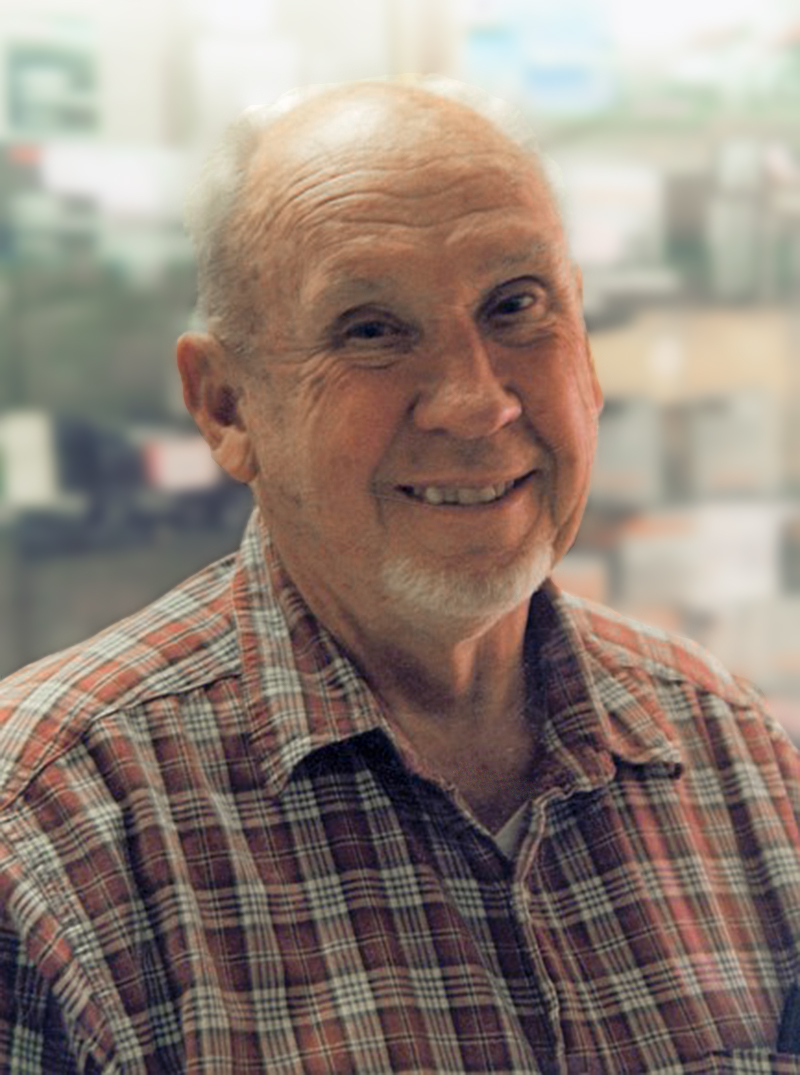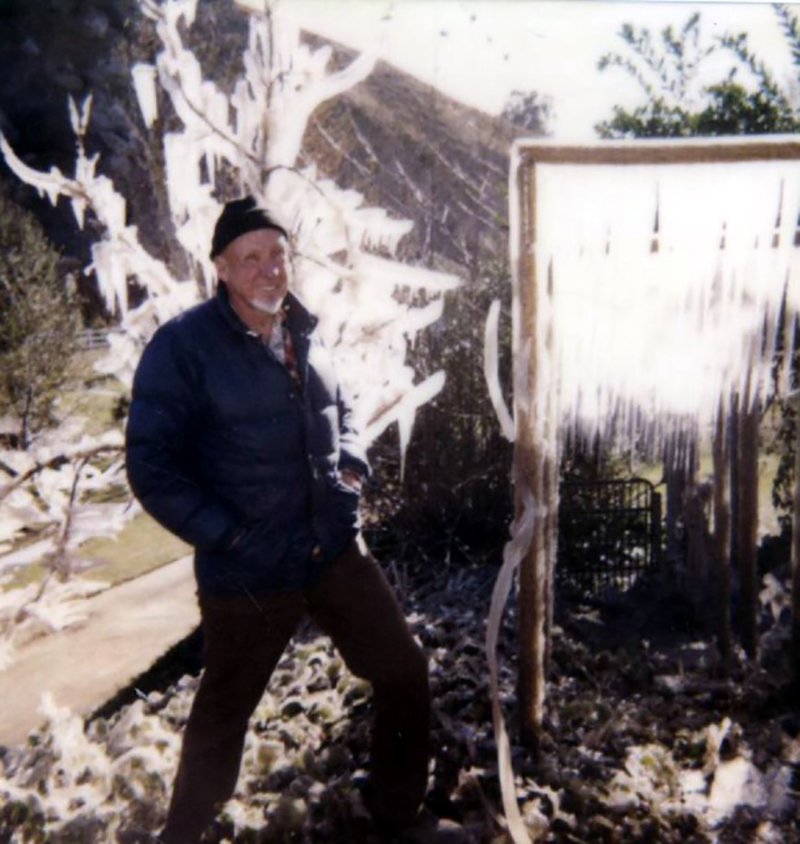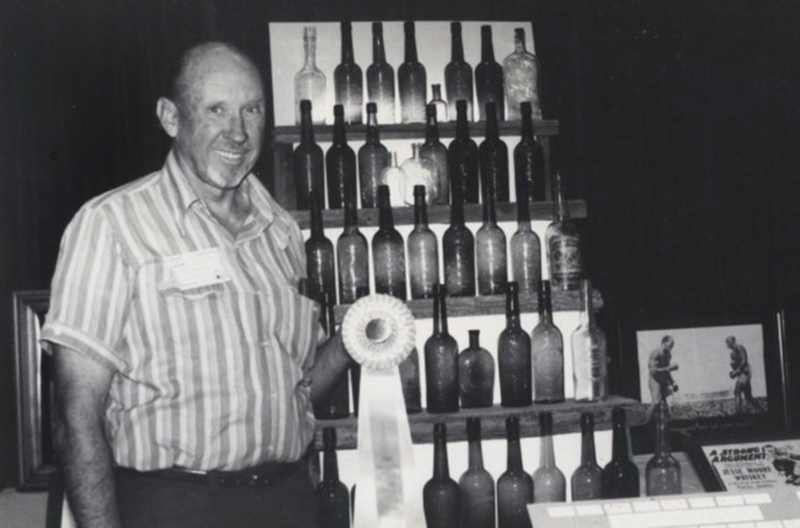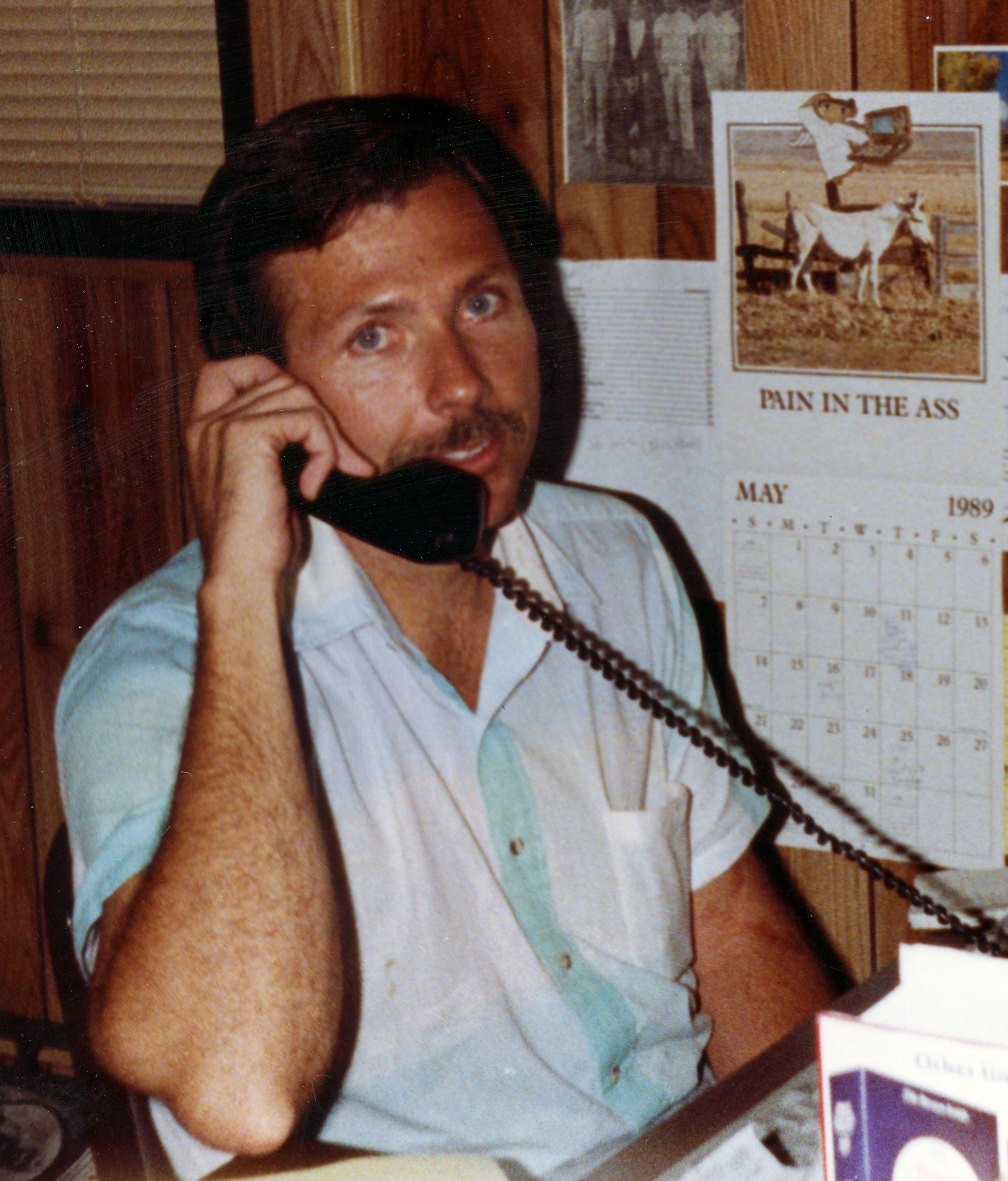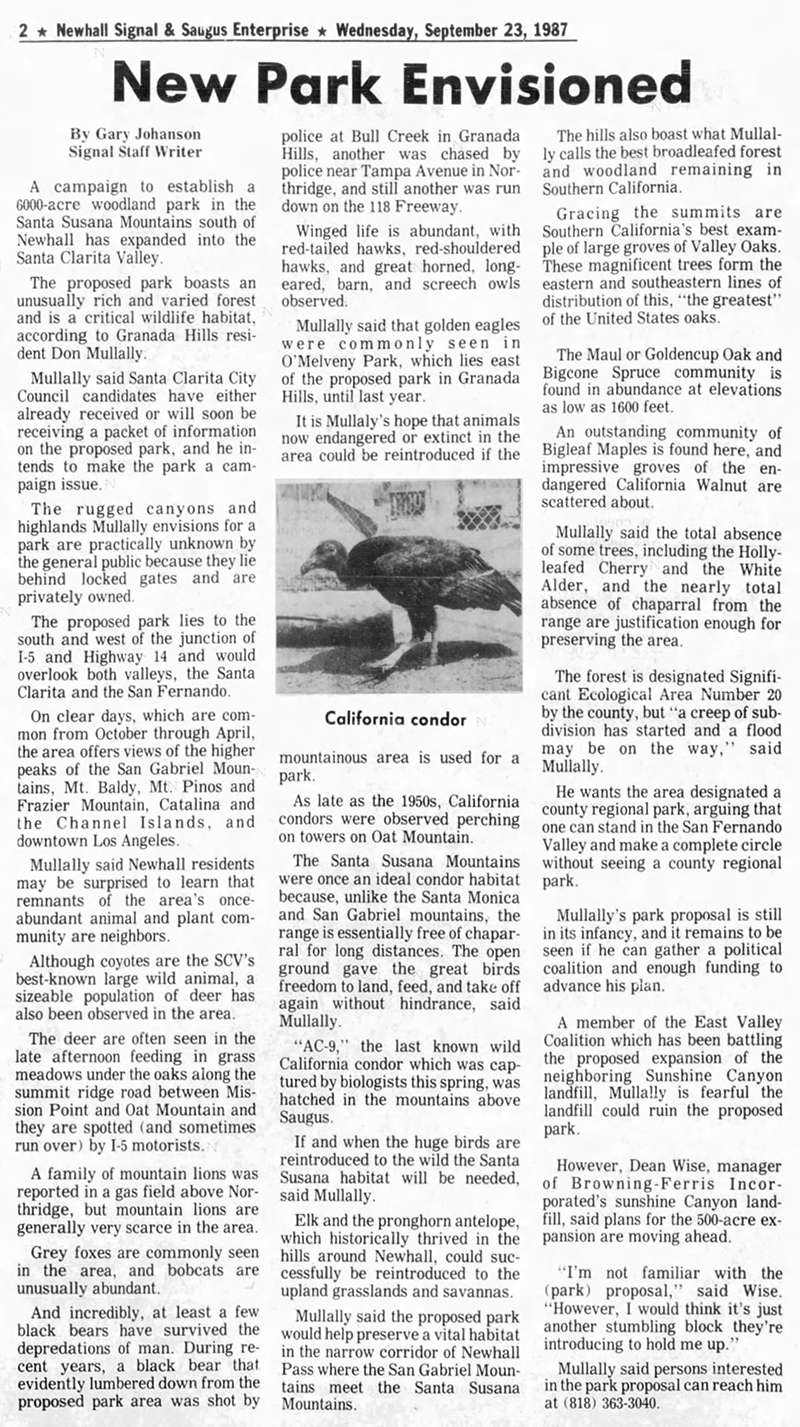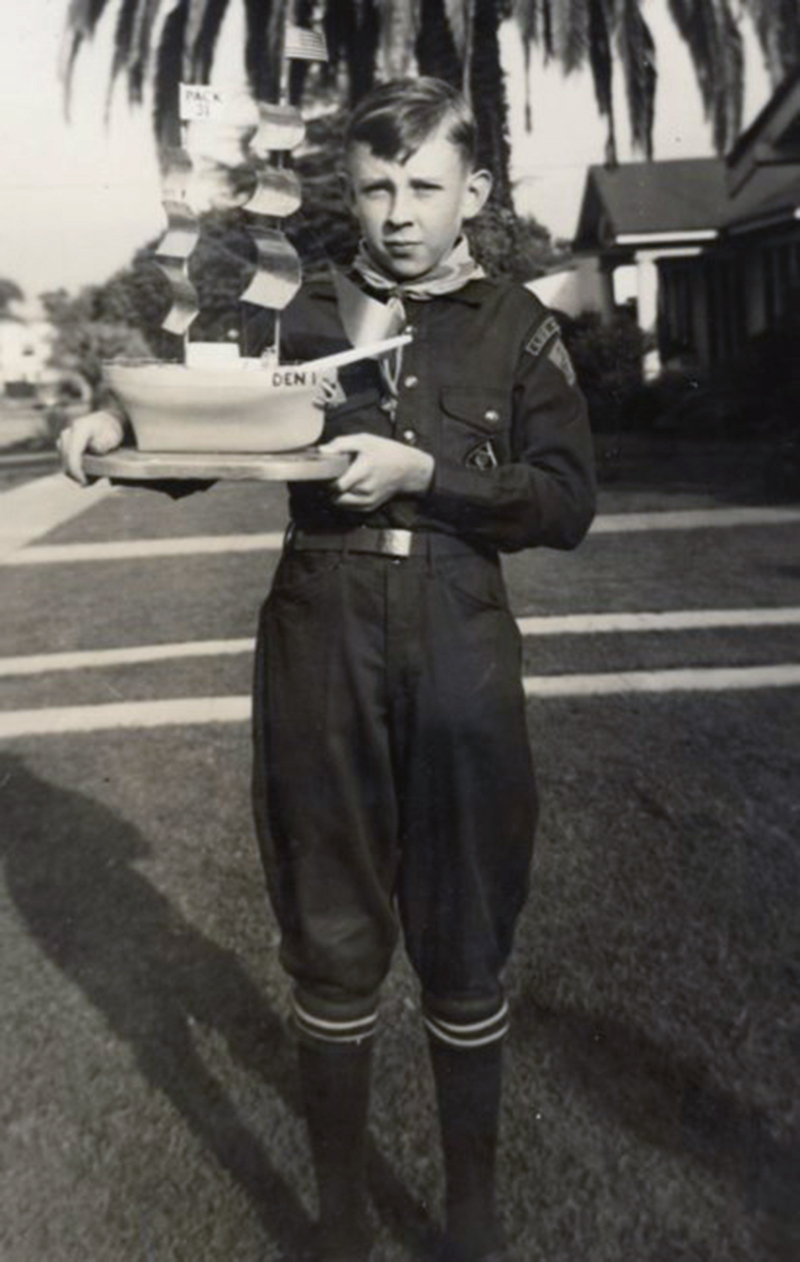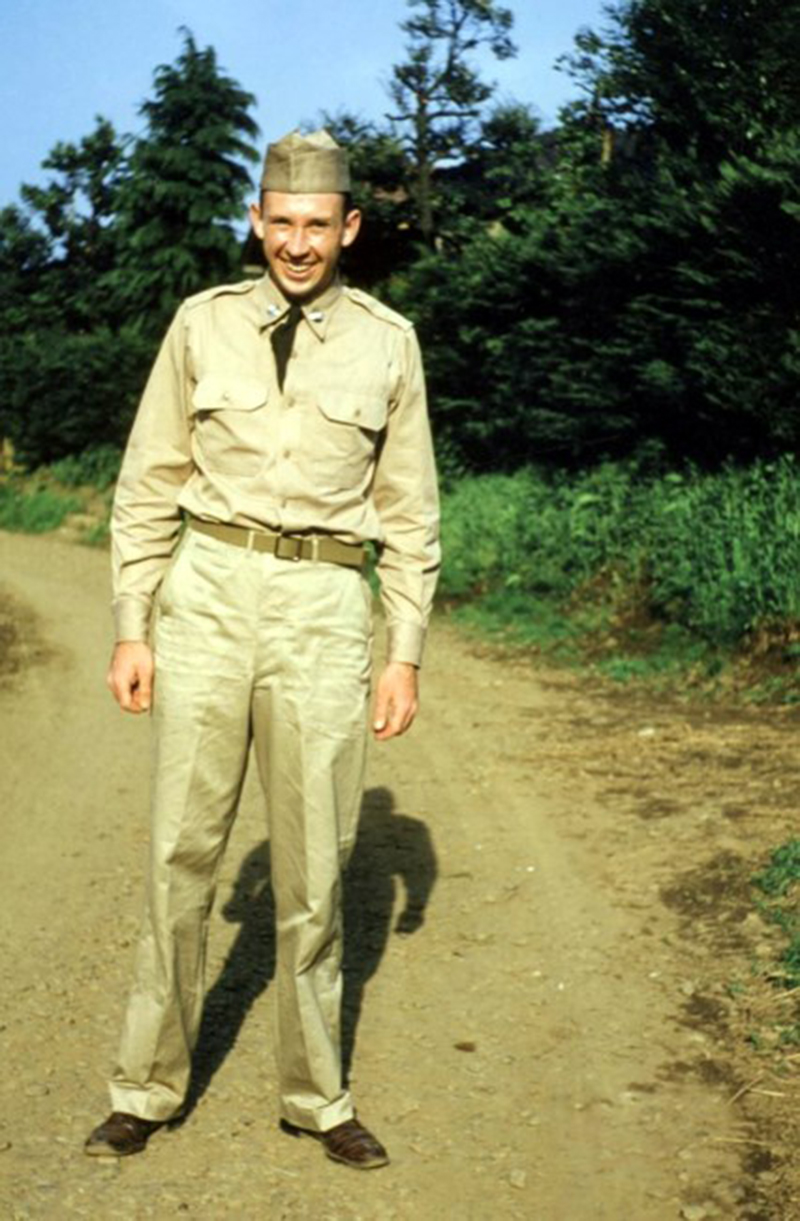
Don Patrick Mullally
Botanist, Naturalist, Santa Clarita Woodlands Visionary
|
Funeral Service
Graveside Service
|
Biologist and naturalist Don Mullally, whose work was crucial in keeping a landfill out of Towsley Canyon, died Sunday, January 5. He was 90. Mullally spent much of his life documenting the wildlife and ecological landscape of the Santa Susana Mountains, designated Significant Ecological Area 20 by the Los Angeles County Department of Regional Planning, according to Santa Clarita City Councilwoman Laurene Weste, a longtime friend. "Don had done extensive studies in the area and had mapped the plant material — some of which is very rare in Southern California," Weste said. "He collected a lot of photographic evidence for all of the wildlife. He cataloged almost everything. We used his plant and animal species list extensively and continue to use it today." Weste had begun working with then-Senator Ed Davis in the 1980s to preserve the mountains, most particularly Towsley Canyon. Weste said Mullally's knowledge of the plant materials and biology of the area, as well as his ability to teach, helped in preventing "complete disaster" to an "extremely important ecological area." "That was essentially the beginning of my work with open space around the Santa Clarita Valley and the culmination of Don's dream of preserving one of the most important ecological places in Los Angeles County," she said. "I think Don should be remembered as someone who really, deeply cared about nature. He studied it, wrote about it and he'd make you crazy talking about it." Before Mullally became an integral part of preserving Towsley Canyon, he was a 10th-grade teacher at Sylmar High School, where Richard Green, took Mullally's biology course and later became his lab assistant. Mullally wasn't your typical teacher, Green said, teaching his biology lessons with "tarantulas crawling on his arms." Green, a Newhall resident and owner of Green Landscape Nursery, said he and Mullally were "linked intrinsically throughout life" — happening to be neighbors years after Green took Mullally's class, bumping into each other at O'Melveny Park when Mullally helped oversee the park, and meeting again later in life when Green and Mullally worked with Weste on other open space and park projects. Green and Mullally became long-time friends who bonded over rocks and gems and historic mines, and they hiked all over the Santa Clarita Valley and beyond. "The Santa Clarita Valley benefited from him big-time," Green said. "He was very proud of the trail system because it should live through generations. I think that pleased him to no end. He was very pleased with that — with his wife Mary being a big-time hiker and his love for nature." Weste, too, spent a lot of time hiking with Mullally, and he'd regularly follow up with her about what new open space would be preserved next. "In a world that's rapidly modernizing and building on everything, Don always had that spirit to embrace some of the most beautiful and beneficial areas of our habitat. That was his love," Weste said. "He wanted to make sure it was there for future generations to care about," she said. "He gave them his all in his life. Towsley Canyon is something that had we all not worked as a team collaboratively, it wouldn't be there. He was able to work with us all to get that done and he never gave up — even after the legislature approved it, he'd call me every few months and ask 'What's next?'" On September 27, 2014, Mullally was honored by then-Mayor Weste and representatives from the Santa Monica Mountains Conservancy, the Sierra Club, SCOPE and others when the Towsley Canyon Loop was renamed and rededicated as the Don Mullally Trail. "I'm really excited to see (Mullally) and all his mapping and biology resource work be recognized," Weste said at the 2014 dedication. "We had to map the entire 8,000 acres to get all the biological reports together and identifying plants and wildlife in the area." Weste praised Mullally's intelligence and work in the field, telling stories about how the two worked to help create trails in the area and how Mullally's efforts were critical to the preservation of open space in the region. Mullally's biological studies helped outsiders recognize the value of the area's wildlife, validating its significance and pristine nature, Weste said. Ultimately, state officials deemed the area where the trail lies too small for a state park, but the Santa Monica Mountains Conservancy joined in the preservation effort, and with support from Santa Clarita city officials, the land was eventually set aside as open space. He was born Don Patrick Mullally on July 22, 1929. In lieu of flowers, the family requests donations be made to the Lockwood Animal Rescue Center, Frazier Park 93225. A funeral service is set for Friday, January 17, at Eternal Valley Memorial Park, from 1 p.m. to 2 p.m., followed by a graveside service at 2 p.m. Eternal Valley Memorial Park is located at 23287 North Sierra Highway, Newhall 91321.
Eulogy. Remarks as prepared.
Good afternoon, everybody. I want to thank all of you for coming out today to pay final respects to our good friend Don Patrick Mullally. Yesterday my brother Ed and I walked along his hiking trail in the Santa Clarita Woodlands. We stopped to read the inscription on his plaque and to look at two hiking sticks placed on the ground in front of his plaque. I thought back to the time, many years ago, when the hiking trails of the Santa Clarita Woodlands existed only in Don Mullally's visionary mind. I thought back to the day in 1987 when Don walked into The Newhall Signal where I worked as a reporter, and he pretty much demanded that I write a story about a woodlands park that he wanted to create in the mountains above Newhall [see below]. Several days later, Don, an off-duty ranger from Placerita Canyon State Park [Frank Hovore] and I were hiking up a dirt road in East Canyon. We were trespassing on Chevron Oil land. The morning ended with the three of us chased by a dog that raced down from the caretaker's house. I returned to the newspaper office and wrote my story. Don said the story wasn't half bad, and that was the beginning of my friendship with that hot-blooded Irishman who relished a good fight for a worthy cause. During the following months and years, Don led numerous groups of community leaders, activists, hikers and scientists on forays into the canyons and ridges and upper slopes of the woodlands. The "No Trespassing" signs were nothing more than inconvenient facts of little consequence for Don Mullally. Don hauled picks and shovels and brush-cutting tools and covertly hacked out trails so his visitors could experience first-hand the unparalleled native tree associations and ecological majesty of the woodlands. Don teamed up with the late Henry Schultz to carve out a trail up to Mission Peak. This very rough trail, which included a knotted climbing rope tied to an oak tree, was dubbed the Ho Chi Minh Trail by those brave or crazy enough to use it. Standing atop a ridge in the woodlands, Don saw the pastel-colored housing tracts and portable classrooms that were filling the Santa Clarita Valley. He recognized that the current residents and thousands of newcomers moving into the Santa Clarita Valley would need new places to hike and escape the worries of the city and the deadening drudgery of their daily commute. His education and experience as a zoologist and botanist established Don as a man who knew what he was talking about when it came to plants and animals and ecosystems. I believe what set Don apart from many others was his vision of what could be accomplished if he could pull together like-minded people and groups and work with the political apparatus to obtain the funding necessary to create the park. Don knew time was running out to get the job done, and he worked feverishly during the first six years of the project, working as manager of O'Melveny Park in Granada Hills during the week and spending his weekends and evenings and some of his vacation days working on the Woodlands Park proposal. Don traveled around, addressing community groups and governmental entities. Don had a booming voice and a commanding presence when he addressed a crowd — the logical outcome of 21 years working as a high school biology teacher and summers working as a state park naturalist. Don knew how to build a coalition. He reached out to the Sierra Club, equestrians and the media, and many others whose names are too numerous to mention today. However, I would be remiss if I did not mention Laurene Weste, an early and enthusiastic supporter of the park; Scott and Ruth Newhall, publishers of The Signal and the short-lived Citizen newspaper, whose coverage of the Woodlands Park proposal were critically important for building public support; and Don's wife, Mary. [... ad lib ...] Don retired from his job as manager of O'Melveny Park in Granada Hills in 1992, but he never tried of working on the creation of the Santa Clarita Woodlands. Nobody paid Don to do this. It was just what he knew he needed to do, in the same manner that John Muir tirelessly fought to protect the wild and scenic Sierra Nevada Mountains and David Gaines of Lee Vining, California, took on the Los Angeles Department of Water and Power and ignited a movement which succeeded in saving Mono Lake and the brine shrimp and migratory birds which populate that saline soda lake. Fifteen miles north of Mono Lake is a high-country stream called Green Creek. Thirty years ago, Don was fishing in Green Creek when he saw cattle grazing along and in the stream. Don checked around and found out the land was owned by a Bakersfield-area cattle company. Don wrote up a biological assessment and reached out to the Trust for Public Lands. In a relatively short period of time, the Trust for Public Lands acquired the land and then turned it over to the U.S. Forest Service. Today, the lush headwaters and meadow of Upper Green Creek are open to everyone to enjoy and make happy memories. Today I call upon those of you who wish to honor the life and spirit of Don Patrick Mullally to find your own Santa Clarita Woodlands, your own Green Creek, your own Mono Lake, and jump right in. And don't forget to honor Don's life and spirit by having fun while you are doing it.
New Park Envisioned. The Signal | Wednesday, September 23, 1987.
A campaign to establish a 6,000-acre woodland park in the Santa Susana Mountains south of Newhall has expanded into the Santa Clarita Valley. The proposed park boasts an unusually rich and varied forest and is a critical wildlife habitat, according to Granada Hills resident Don Mullally. Mullally said Santa Clarita City Council candidates have either already received or will soon be receiving a packet of information on the proposed park, and he intends to make the park a campaign issue. The rugged canyons and highlands Mullally envisions for a park are practically unknown by the general public because they lie behind locked gates and are privately owned. The proposed park lies to the south and west of the junction of I-5 and Highway 14 and would overlook both valleys, the Santa Clarita and the San Fernando. On clear days, which are common from October through April, the area offers views of the higher peaks of the San Gabriel Mountains, Mt. Baldy, Mt. Pinos and Frazier Mountain, Catalina and the Channel Islands, and downtown Los Angeles. Mullally said Newhall residents may be surprised to learn that remnants of the area's once-abundant animal and plant community are neighbors. Although coyotes are the SCV's best-known large wild animal, a sizeable population of deer has also been observed in the area. The deer are often seen in the late afternoon feeding in grass meadows under the oaks along the summit ridge road between Mission Point and Oat Mountain, and they are spotted (and sometimes run over) by I-5 motorists. A family of mountain lions was reported in a gas field above Northridge, but mountain lions are generally very scarce in the area. Grey foxes are commonly seen in the area, and bobcats are unusually abundant. And incredibly, at least a few black bears have survived the depredations of man. During recent years, a black bear that evidently lumbered down from the proposed park area was shot by police at Bull Creek in Granada Hills, another was chased by-police near Tampa Avenue in Northridge, and still another was run down on the 118 Freeway. Winged life is abundant, with red-tailed hawks, red-shouldered hawks, and great horned, long-eared, barn, and screech owls observed. Mullally said that golden eagles were commonly seen in O'Melveny Park, which lies east of the proposed park in Granada Hills, until last year. It is Mullally's hope that animals now endangered or extinct in the area could be reintroduced if the mountainous area is used for a park. As late as the 1950s, California condors were observed perching on towers on Oat Mountain. The Santa Susana Mountains were once an ideal condor habitat because, unlike the Santa Monica and San Gabriel mountains, the range is essentially free of chaparral for long distances. The open ground gave the great birds freedom to land, feed, and take off again without hindrance, said Mullally. "AC-9," the last known wild California condor, which was captured by biologists this spring, was hatched in the mountains above Saugus. If and when the huge birds are reintroduced to the wild, the Santa Susana habitat will be needed, said Mullally. Elk and the pronghorn antelope, which historically thrived in the hills around Newhall, could successfully be reintroduced to the upland grasslands and savannas. Mullally said the proposed park would help preserve a vital habitat in the narrow corridor of Newhall Pass where the San Gabriel Mountains meet the Santa Susana Mountains. The hills also boast what Mullally calls the best broad-leafed forest and woodland remaining in Southern California. Gracing the summits are Southern California's best example of large groves of valley oaks. These magnificent trees form the eastern and southeastern lines of distribution of this, "the greatest" of the United States oaks. The maul or goldencup oak and bigcone spruce community is found in abundance at elevations as low as 1,600 feet. An outstanding community of bigleaf maples is found here, and impressive groves of the endangered California walnut are scattered about. Mullally said the total absence of some trees, including the holly-leafed cherry and the white alder, and the nearly total absence of chaparral from the range are justification enough for preserving the area. The forest is designated Significant Ecological Area Number 20 by the county, but "a creep of subdivision has started, and a flood may be on the way," said Mullally. He wants the area designated a county regional park, arguing that one can stand in the San Fernando Valley and make a complete circle without seeing a county regional park. Mullally's park proposal is still in its infancy, and it remains to be seen if he can gather a political coalition and enough funding to advance his plan. A member of the East Valley Coalition, which has been battling the proposed expansion of the neighboring Sunshine Canyon landfill, Mullally is fearful the landfill could ruin the proposed park. However, Dean Wise, manager of Browning-Ferris Incorporated's Sunshine Canyon Landfill, said plans for the 500-acre expansion are moving ahead. I'm not familiar with the (park) proposal," said Wise. "However, 1 would think it's just another stumbling block they're introducing to hold me up." Mullally said persons interested in the park proposal can reach him at (818) 363-3040.
|

